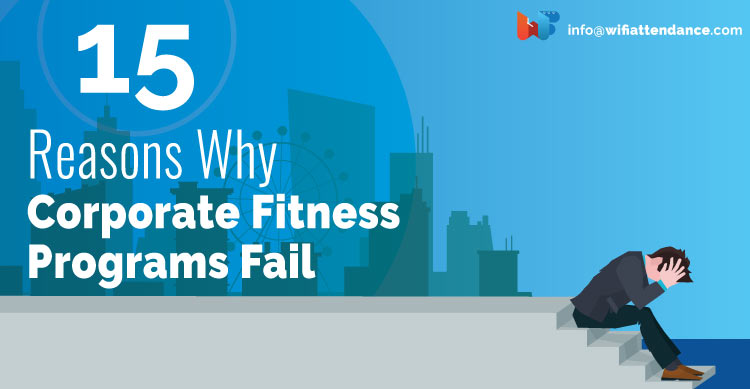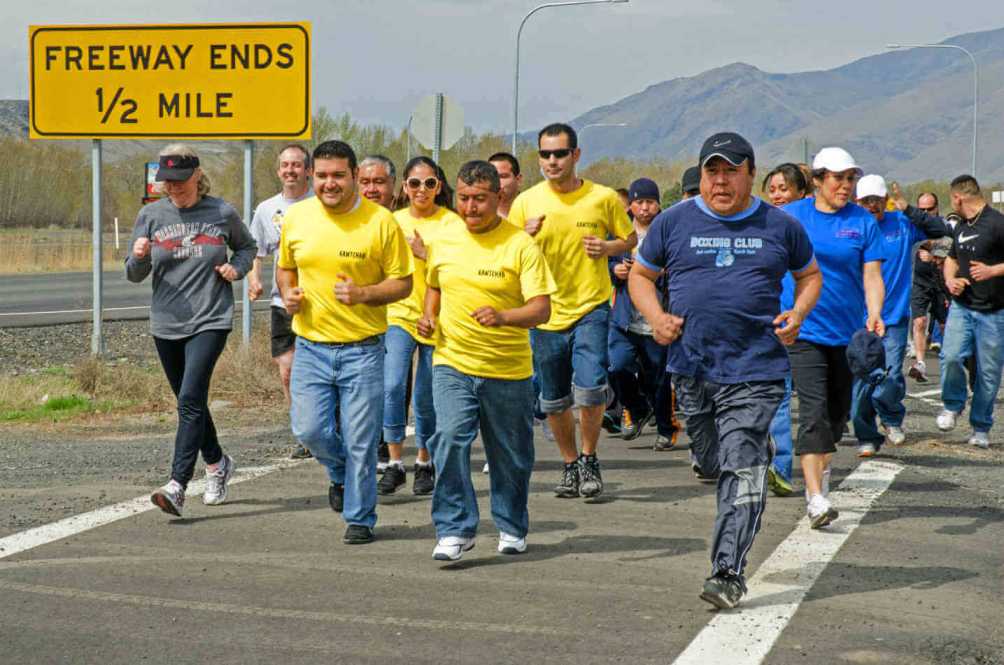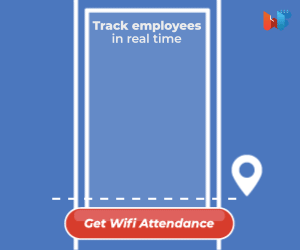
Every corporate company has its own corporate fitness programs. Be it a running marathon, walking, friendly sports match, it is successful only if employees respond and benefit from it.
Companies either conduct individual corporate wellness programs or they pair up with other fitness service provides and conduct a mega wellness drive bringing many people together.
The success of each event is measured differently. Fitness programs don’t just improve employee health but also promotes overall morale.
Read Also: 15 Corporate Companies With Best Employee Wellness Program
Here are some of the tips to conduct a successful wellness drive that will help in both improving employee wellness and morale:
A well designed and executed wellness program stands a chance of success for companies and their human resource.
1. Over Complicating Things
It is vital to make the way simple for every possible activity conducting in a corporate structure. No difference for the corporate wellness programs. It shoves off the mundanity in the registration process and such attached strings.
If possible get the process done through computer and mobile devices and try catching their attention through exciting incentives.
Many organizations provide incentive plans that will urge employees to participate in different wellness drives. It is also essential to explain the incentive plans in simple terms on the registration site for employees to understand.
Ideally, it is crucial to remove all possible barriers to having a successful fitness program right from the start to the end. Failing to do so means guiding the program to failure even before it started.
2. Negative incentives
Yes, negative incentives are a thing. The word incentive often only brings up the meaning of positive inducement. However, there are also negative incentives that will, in turn, have a negative impact on the target audience.
Negative incentives are ideally plans that issue fines and penalty to employees that do not participate or perform poorly in the fitness drive. There is almost no possible scenario in which negative incentives come out victorious.
Here are some additional examples of the negative incentives for your understanding:
- Forcing the fitness program on employees – it is imperative that employees join the program if it interests them, not when they are forced to do so.
- Communication failure – employees have no way of knowing and entering the fitness program if they have no information about the fitness drive. It is vital to roll out communications to all employees once the fitness drive is initiated.
While motivation and positive benefits drive them to root for the fitness drive, negative incentives will drive them away from it.
Positive reinforcement will not only invite employees to participate in the fitness camp but also will motivate them to continue their participation and perform well in the camp.
3. Using company staff to organize and run the wellness camp
While it is easier to delegate the HR team to conduct these fitness drives, it is essential to understand that they do not have the time and expertise to conduct an extensive program like this.

However, it is crucial to understand that the expertise of HR employees does not stream to conducting fitness camps or other activities. More than the availability and knowledge of the HR team, the primary concern this would raise is the safety of participating employees.
It is essential for the organizers to understand safety hazards and ways to conduct the camp with zero to no causalities. HR officials are often not equipped to conduct such a task.
Many worksites hire trained and qualified professionals to conduct these camps to ensure safety and smooth running of the program.
Some of the major disadvantages of not outsourcing the task to experienced hand include:
- With no additional time at their side, the HR staff will find it challenging to organize and run a fitness drive successfully.
- Without the appropriate training and certification, the on roll HR staff will not be equipped to contemplate the complete caliber of such an event.
- HR staff will have no information on causalities and what needs to be done for such an event.
4. No (OR) Minimal leadership support
Leadership is an essential factor for running a fitness campaign in any organization.. It is not possible for mid or entry-level employees to decide and start such a vast fitness drive on their own.
The workforce and financial support needed to conduct such a camp are humungous. However, the issue begins when the leadership involvement ends once the balls are set in motion.
Many organizations conduct fitness drives with minimal leadership support. While this is necessarily not a bad thing, it is seen that these fitness drives have limitations and this, in turn, affects the result of the camp.
Organizations that conduct fitness drives with full leadership support have seen better employee involvement, and hence, better success rate.
Leadership support does not mean imposing the wellness camp on the employees but providing enough leadership involvement in the camp and helping in organizing a wellness committee and ensuring all essentials are available for a successful camp. This will ensure employee interest and participation in the program.
The leadership team can be involved in the wellness camp in many ways, such as:
- Leadership team participating in the fitness camp
- Take part in team challenges conducted
- Communicate and create awareness about the wellness program in corporate townhouses and other meetings
- Be involved in the evaluation process of the fitness program
5. Failing To Create A Health-Promoting Work Culture
It is essential for the employees to understand the importance of living a healthy lifestyle voluntarily.
If the overall vibe of the organization is to promote healthy choices, employees are more voluntarily inclined to sign up and participate well in fitness drives.
There are many ways of successfully driving the organization towards healthy choices. Some of them are:
- Encouraging employees to use stairs rather than the elevator
- Creating provisions for employees to park their bicycles in the campus
- Creating a safe environment for employees to walk or ride a bicycle to the office campus
- Availability of showers in the office space
- Fitness centers within the office campus
6. Lack of communication
The whole idea of corporate fitness programs are to culture healthy employees and ensure that you spend less on health insurance. This cannot be attained just by ensuring that the employees understand the importance of leading a healthy life.
It is also important to ensure that all employees are well aware of the fitness programs you conduct so that they can practice and participate in the camp.
Gone are the days where posters and fliers did the magic. In this age, it is challenging to grab the attention of people. What with all the distractions from social media. However, a smart fitness campaign can use the same distraction for campaign promotions.

The more mediums you use to share information about the fitness camp, the more employees will get to know about the camp. An effective promotion will also urge employees to sign up for the fitness camp.
All modes of communication such as the email, newsletters, the company website, meeting announcements, staff meetings, text messaging, Facebook, employee orientation, calendars, etc., are just some of the successful modes of communication.
7. Lack Of Proper Monitoring Over Corporate Fitness Activities
Several companies initiate to start various fitness and health programs. Their motive is to ensure every employee is able to gain something positive out of the routines they engage at their workplace. But, the situation fails when these programs are left unmonitored.
It is essential that companies check on the progress data for each program they introduce in their work culture. Without knowing the impact of such fitness techniques, it will all be in vain.
Monitoring teams should be set up that keeps track of the data and ensure all necessary measures are taken when there is a lack of progress.
8. Focusing On A Static Approach
This implies that some companies tend to just introduce programs in the form of a blog or website that just updates information related to health and wellness.
In reality, such a program is of no use as most employees are not even going to try looking at a website to learn about ways to improve their health at companies.
Read Also: 6 Ways To Deal With Political Talk In The Office
People need to be moved around to help them achieve their goals of fitness. That is why, fitness programs need to have field work and should be dynamic.
Using a static method will not provide much help to give company workers a motive to work for it. A company might try to add daily schedules on the website that will let employees know where to gather for the next activity and participate with them.
If they are just going to leave tips on how to stay health and don’t do anything physical about it, then the program simply fails.
9. Leaving the Employee’s Family Members Behind
This situation where a company does not involve its employee’s family might also tend to fail. Understand that wellness programs should be introduced in the firm as a club membership that has various activities to try.
It should not look like a routine that employees are forced to perform. Instead, it is important that companies add a social wellness routine where family members can also participate.
Using this technique will make the professional working there more comfortable and enthusiastic about taking part in the programs.
10. Not Isolating The Wellness Program
Seasons may break-in where companies have to cut their budget during a financial crisis. At that time, companies may have to say goodbye to some provisions.
Without proper planning of the budget, firms may be forced to remove the wellness program committee from the team as well. As a result, there is no fitness programs left for employees to participate in.
This situation can be avoided if the companies isolate the budget of such activities. In other words, such committees that organize the health regimens should function independently in the company.
So, a relevant budget from the financial plan needs to be implemented there for the betterment of the team.
11. Not Adding Fitness Routine As A Benefit
Many corporate organizations tend to provide certain health perks but fail to keep the flow productively. For instance, a firm may offer free fitness trackers to all its employees, and stop any actions after that.

This gives the team members an option to either use the tracker or leave it at home. If a firm is not bothered to understand how the trackers will be useful, then what was to give them to company professionals in the first place?
To deal with it, organizations should monitor the amount of steps or other exercise routines performed by the users. This data should then be awarded for certain milestones that they complete.
This way they are being provided with benefits that are long term. Motivating the team to perform such routines is the right way.
12. Lack Of Patience
Several programs are started with a motive to get results as soon as possible. Without results in that particular period, the companies often tend to shut down such wellness projects. The issue here is the lack of time and the patience to deal with the situation.
Firms need to understand that health activities do not have any shortcuts. Such programs need time to show results. So, they have to be kept going on for a long term to get the relevant results. So, companies should plan such routines keeping in mind a long-term investment.
13. Losing Focus During Day Offs And Vacations
Many employees tend to participate and work hard to improve their health at offices. But, when they take an off or go for vacation, they become easygoing again.
This can break the consistency they had been culturing for so long. Companies need to teach their employees the negative impact of such cheat days where they are not following the schedule with healthy options. Their minds need to be focused to avoid being tempted on such days too.
14. Not Offering Relevant Places To Practice Health Programs
Sometimes companies have dedicated and well-designed wellness routines for their employees, but they might lack a proper room or area to perform those activities.
Without convenience, health programs tend to fail. So, firms should indulge in programs in convenient spaces where organization professionals feel like going and following the program.
15. Focusing On Short-term Changes Instead Of Long Term Ones
Corporate fitness programs should be created with a vision to add long term changes in the lives of the employees. If the project is just focused on short-term results, then it will not have much impact on the people working in the company.
Read Also: 17 Tips To Maintain A Healthy Work-Life Balance In 2019
Long term changes take place when people tend to add them in their lifestyle. So, organizations should focus on plans that incorporate lifestyle changes, which stay throughout their lives.
Final Words
Adding value to the fitness programs can be highly beneficial for long term and accurate results. The above points should always be kept in mind to initiate a productive process for a healthy lifestyle even at workplaces.










